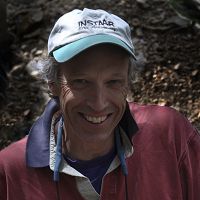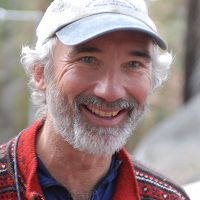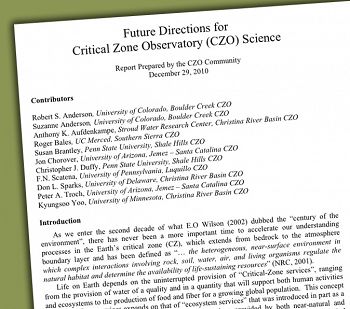Anderson et al, 2010
Future Directions for Critical Zone Observatory (CZO) Science
Anderson, R.S., Anderson, S., Aufdenkampe, A.K., Bales, R., Brantley, S., Chorover, J., Duffy, C.J., Scatena, F.N., Sparks, D.L., Troch, P.A., Yoo, K. (2010)
CZO Community, December 29, 2010 Cross-CZO National
-
Boulder, INVESTIGATOR
-
Boulder, INVESTIGATOR
-
Christina, INVESTIGATOR
-
Sierra, INVESTIGATOR
-
National, Eel, Luquillo, Shale Hills, INVESTIGATOR, COLLABORATOR
-
Catalina-Jemez, INVESTIGATOR
-
Shale Hills, INVESTIGATOR
-
Luquillo, INVESTIGATOR
-
Christina, INVESTIGATOR
-
Catalina-Jemez, INVESTIGATOR
-
Christina, INVESTIGATOR
Abstract
As we enter the second decade of what E.O Wilson (1997) dubbed the “century of the environment”, there has never been a more important time to accelerate our understanding processes in the Earth’s critical zone (CZ), which extends from bedrock to the atmosphere boundary layer and has been defined as “… the heterogeneous, near-surface environment in which complex interactions involving rock, soil, water, air, and living organisms regulate the natural habitat and determine the availability of life-sustaining resources” (NRC, 2001).
Life on Earth depends on the uninterrupted provision of “Critical-Zone services”, ranging from the provision of water of a quality and in a quantity that will support both human activities and ecosystems to the production of food and fiber for a growing global population. This concept of Critical-Zone services expands on that of “ecosystem services” that was introduced in part as a framework for considering the many benefits or services provided by both near-natural and highly-managed ecosystems (Carpenter et al., 2009) by explicitly including the coupled hydrologic, geochemical, and geomorphic processes that underpin ecosystem processes.
The structure and functioning of the CZ have evolved in response to climatic and tectonic perturbations throughout the Earth’s history, with the processes driving change more recently accelerated by human activities (Steffen et al., 2007). The immediate challenge is to develop a robust predictive ability for how CZ attributes, processes, and outputs will respond to projected climate and land-use changes. This predictive ability must be founded on sufficiently broad knowledge of critical-zone processes to describe how the varied climatic and geologic factors that distinguish different regions interact, and require advances in measurement, theory and modeling.
Critical Zone Observatories (CZOs), funded by the U.S. National Science Foundation and the European Commission, offer a unique instrument to address this challenge. CZOs provide essential data sets and a coordinated community of researchers that integrate hydrologic, ecological, geochemical and geomorphic processes from grain to watershed scales. CZOs are the lenses through which we will bring into focus the rich complexity of interactions between the lithosphere, the pedosphere, the hydrosphere, the biosphere and the atmosphere. CZOs are poised to reveal both how mass and energy fluxes interact with life and lithology over geological timescales that see the transformation of bedrock into soils, and how the same coupled processes enact feedbacks between the CZ, changing climate and changing land use over timescales of human decision making.
Over the next decade, the CZO program will produce a fundamental understanding and four-dimensional data sets that will stimulate, inspire, and test the resulting predictive models. The CZOs will:
- Develop a unifying theoretical framework of CZ evolution;
- Develop coupled systems models to explore how CZ services respond to anthropogenic, climatic, and tectonic forcings;
- Develop data sets that document differing CZ geologic and climatic settings, inform our theoretical framework, constrain our conceptual and coupled systems models, and test model-generated hypotheses.
As such, CZOs have the potential to catalyze transformative science of the surface Earth.
Citation
Anderson, R.S., Anderson, S., Aufdenkampe, A.K., Bales, R., Brantley, S., Chorover, J., Duffy, C.J., Scatena, F.N., Sparks, D.L., Troch, P.A., Yoo, K. (2010): Future Directions for Critical Zone Observatory (CZO) Science. CZO Community, December 29, 2010.
 This Paper/Book acknowledges NSF CZO grant support.
This Paper/Book acknowledges NSF CZO grant support.
Associated Files
Future Directions of CZO Science
(31 KB pdf)
A Report Prepared by the CZO Community for the NROES Committee
Explore Further












